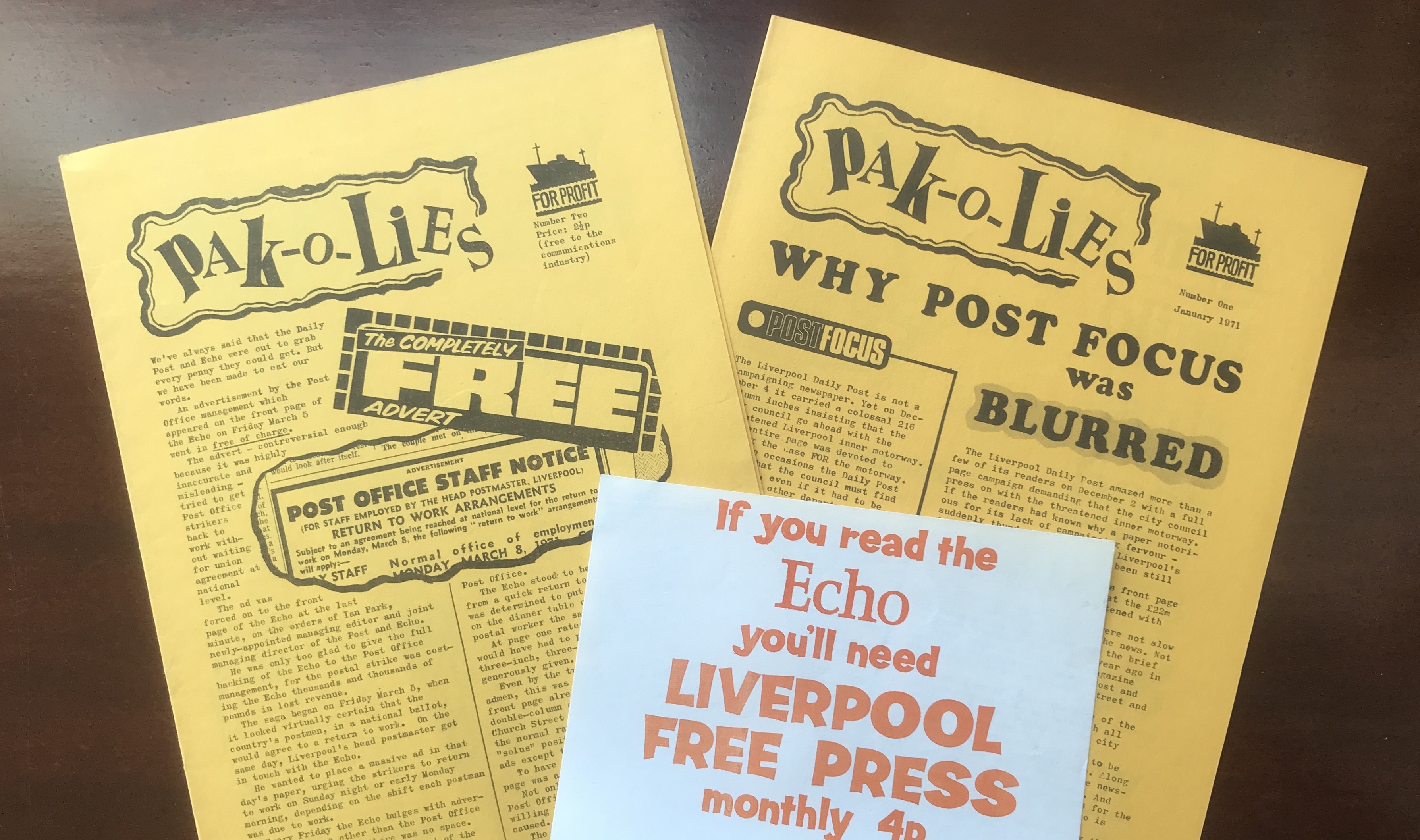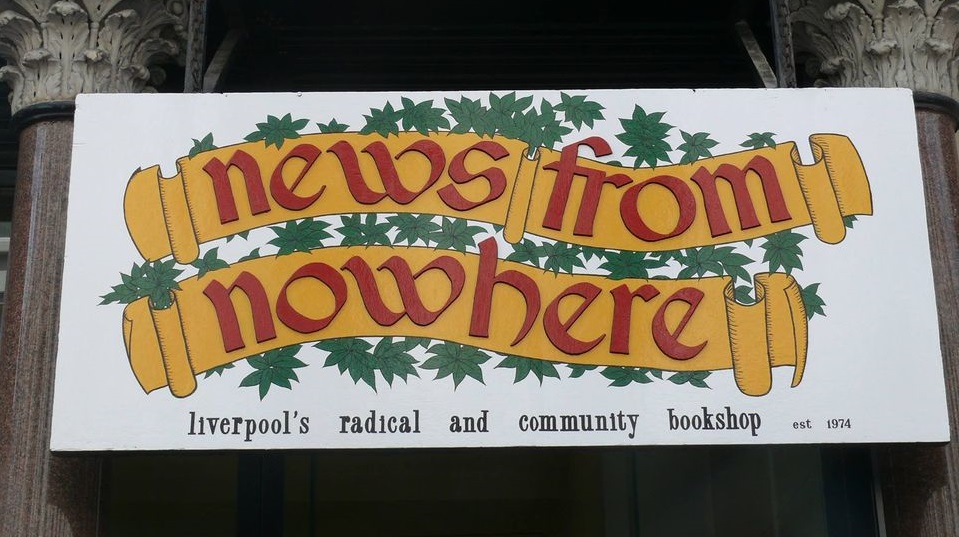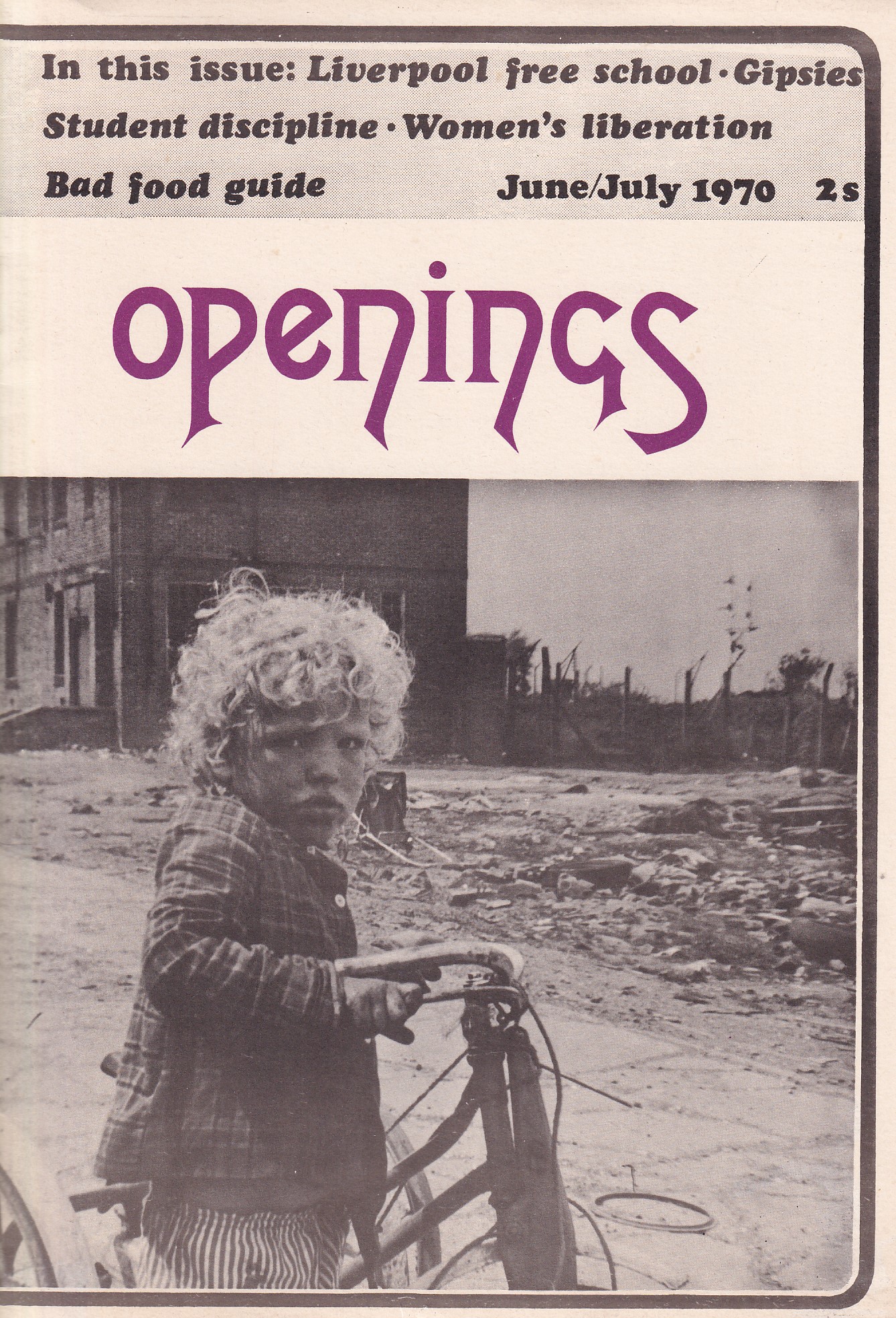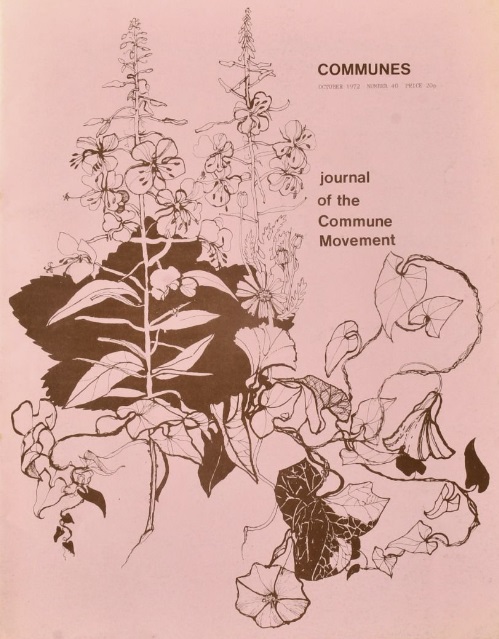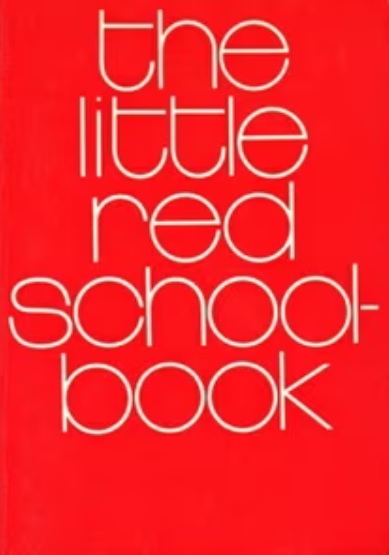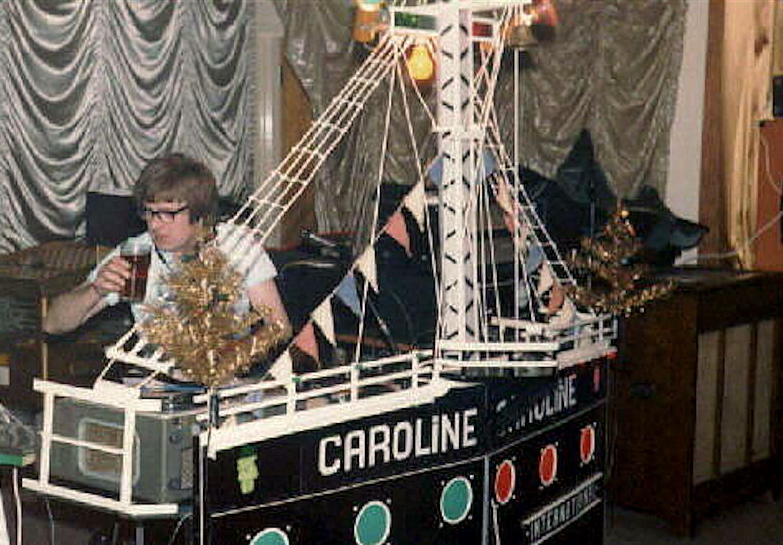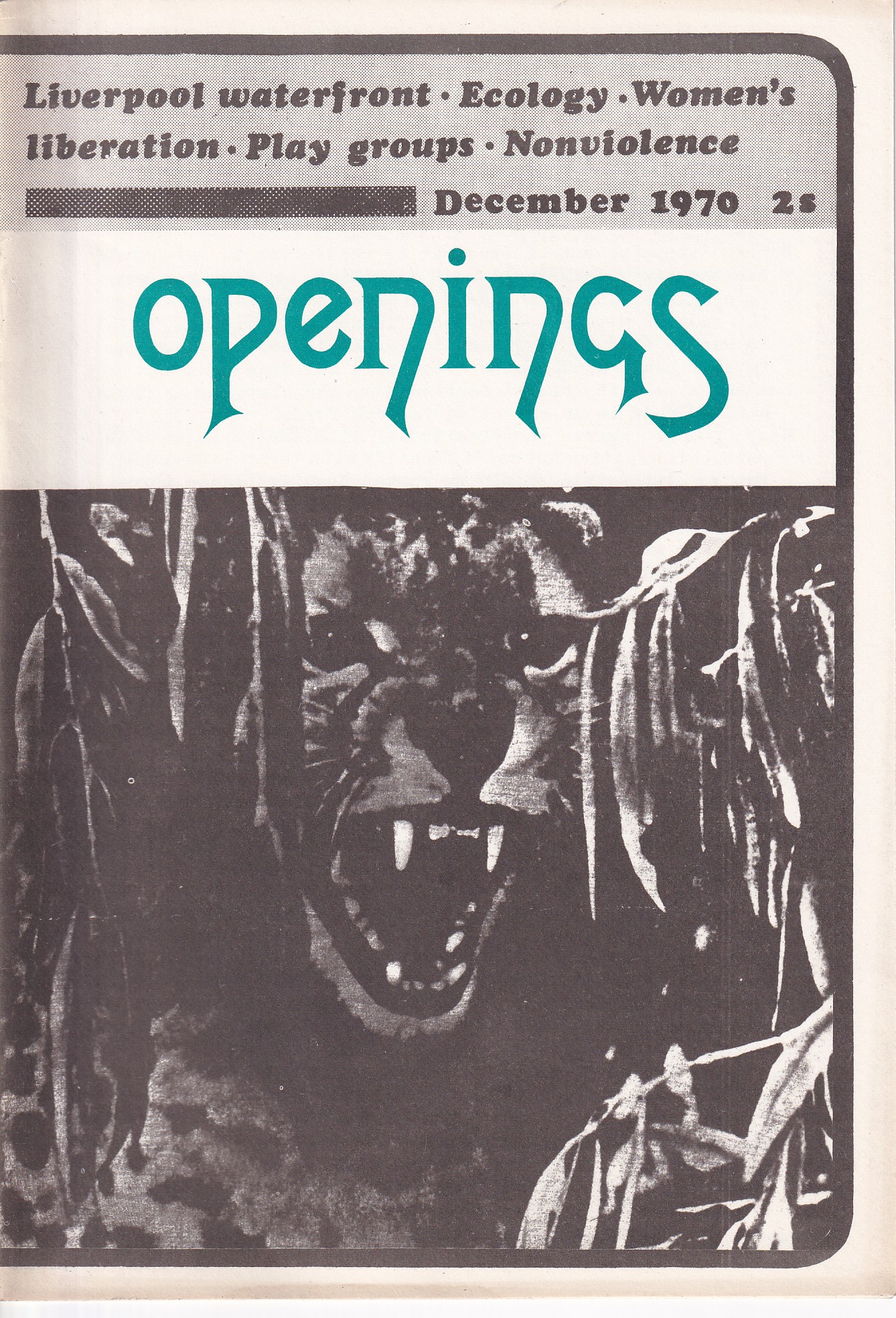Openings magazine was an offshoot from Open Design which survived for only two issues. It didn't attract much attention at the time, though it was later extensively cited in a Leeds University PhD thesis about communes.
In what might be regarded as a manifesto, Openings set out a vision “in which the means and the end are morally indistinguishable, where change begins at the bottom and grows outwards, where what would normally be regarded as the objective [we] treat as a starting point: we aim to live out in the present, as far as possible, the future of freedom and co-operation”.
It went on to explain what this would mean in practice:
* It means making our own decisions and not taking it easy while someone else decides for us.
* It means respecting an environment in which other people (as well as animals and plants) have to live.
* It means working freely, producing for a need instead of for an artificially created market.
* It means consuming freely, buying what we want instead of what someone else wants us to buy.
* It also means education, real education, not soaking up facts but learning to think and do things for ourselves.
* Creative revolution doesn’t need votes or guns … All it needs to begin is a few people who decide to make it happen.
The first issue, in June 1970, was a deliberately eclectic mix of topics: complaints about the behaviour of Liverpool University’s disciplinary board and the problems local authorities were causing for gypsies, plus a feminist view on the marketing of vaginal deodorants. There were also gardening tips, a recipe for making your own yoghurt and a few humorous titbits such as the following disclaimer: “Mr John Cowan of the Liverpool Anarchist Group has asked us to point out that he has no connection with Mr John Cowan, chairman of the Police Federation’s constables section, who recently made an attack on ‘filthy, long-haired drop-outs’.” Rob Rohrer and I wrote some of the content using pseudonyms and I also helped with the production.
The second issue was similar mix, with a report on Welsh parents' campaign to save rural schools, a four-page "obituary" of the Earth by American scientist Paul Ehrlich and an essay about Liverpool's waterfront. This was combined with news about various "alternative" projects and items encouraging readers to plant trees and bake their own bread.
Openings had several design features that could be found in other "alternative" publications at the time a result of their low-tech production methods (among them Communes magazine). Headlines, for example, were noticeably short because "typesetting" them with Letraset was a laborious business. In the absence of typesetting equipment text was mainly produced on a typewriter. A few articles were typeset, but that was because they had been cut and pasted from other publications.
Openings, and some of the others, sought to make a virtue of this "hand-crafted" look, since it could be regarded as part of their general ethos. However, there were various techniques intended to make it more appealing at minimal cost. One was to use coloured inks and print some of the pages on tinted paper. There was also a fashion at the time for superimposing images over text, though the results were sometimes almost illegible.
To give a cleaner appearance to the text, the typewriter's normal cloth ribbon was replaced with a single-use carbon ribbon which gave a much cleaner edge to the type.
There was also a view that columns of typewritten text looked neater when justified (with even margins on both left and right). In had to be typed twice: once to work out how much space would be needed between words to fill out the line, and a second time, more slowly, inserting the necessary extra spaces.
On occasions a line could also be shrunk to squeeze in an extra word by using half-spaces. This little-known technique relied on the way a typerwiter's space bar works. Pressing the space bar moves the carriage half a space and releasing the bar moves it a further half-space. Making use of the half-space facility meant typing some of the words while holding down the space bar.
Brian Whitaker
